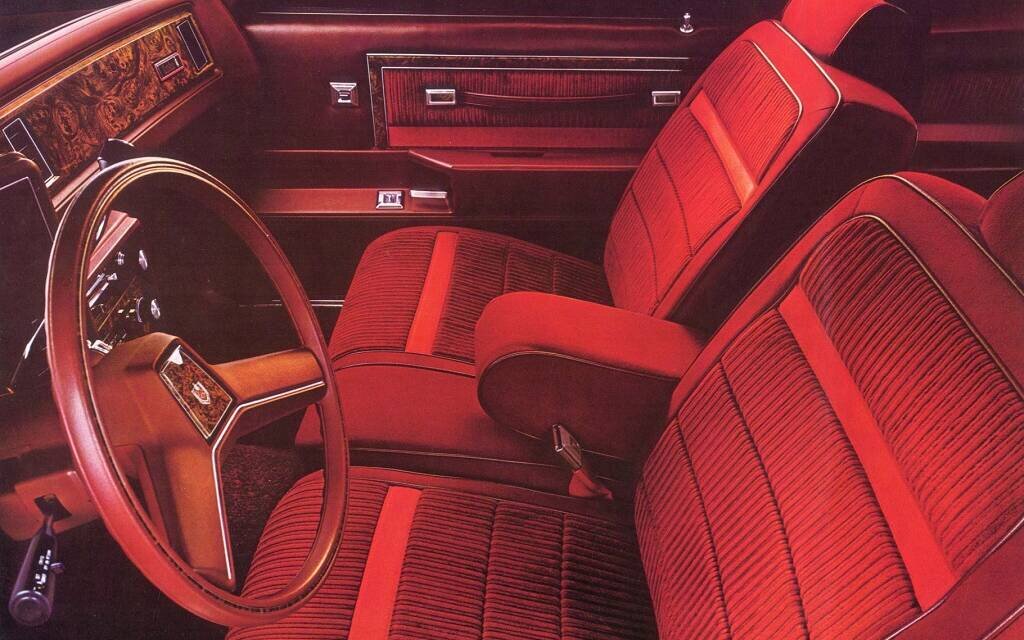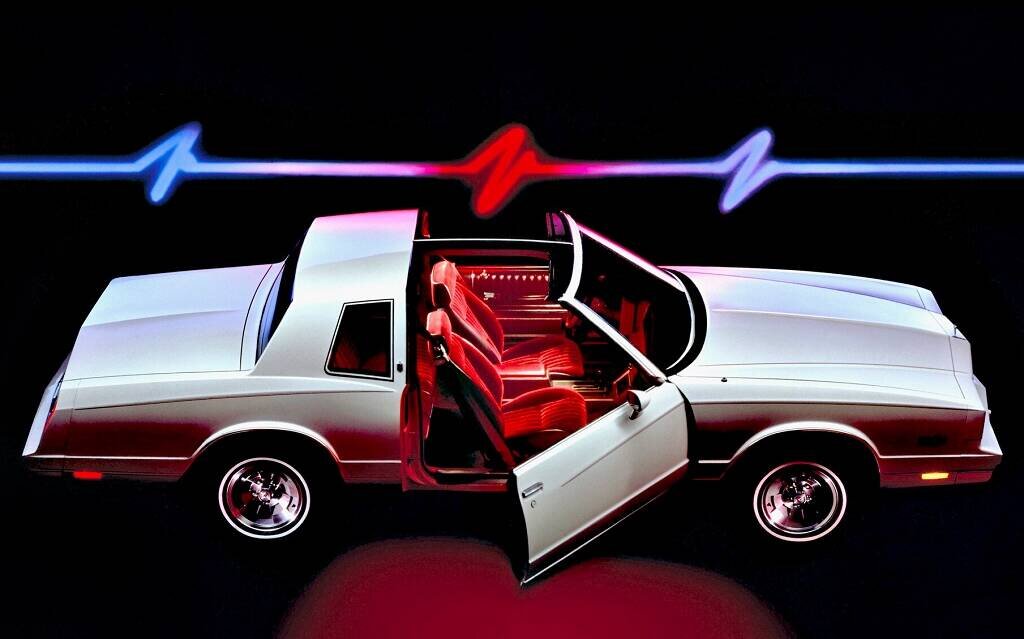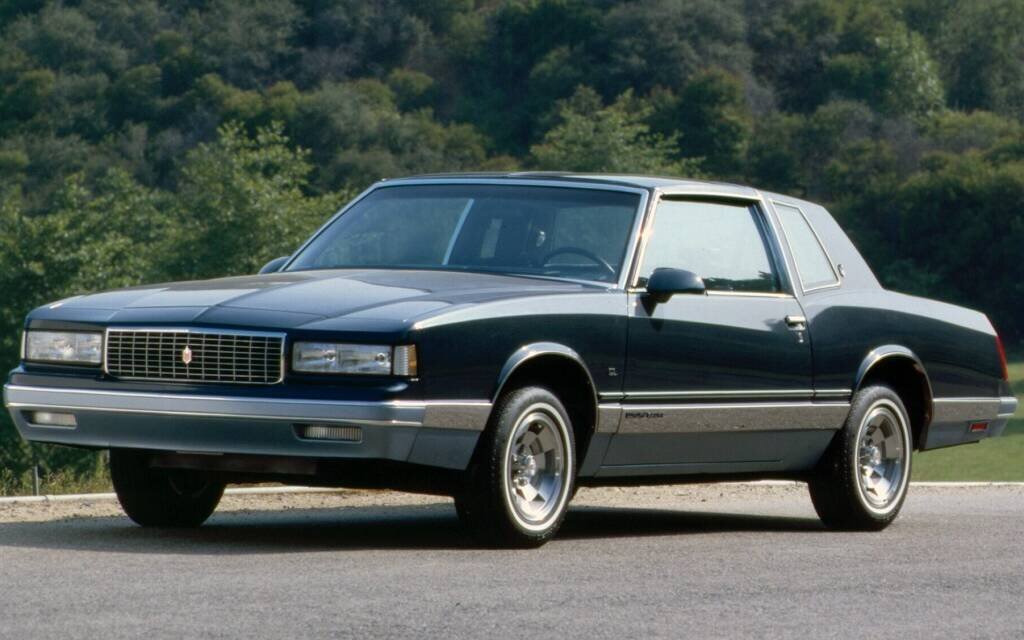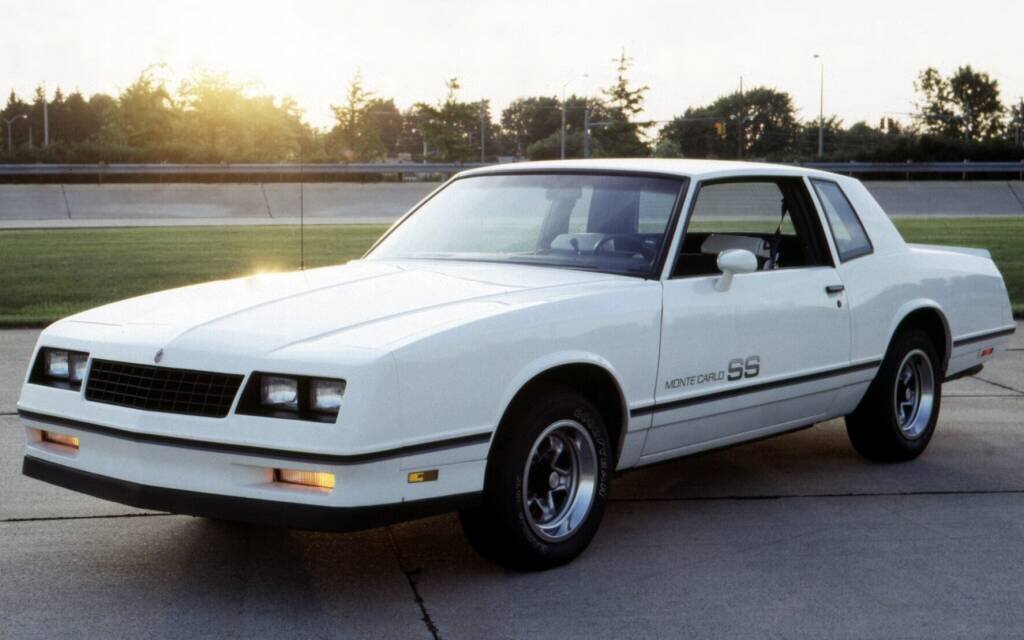The 1980s were a period of change in North America: the transition to front-wheel drive, electronic fuel injection and monocoque construction. However, some irreducible models still resist valiantly, such as the Monte Carlo. But that’s in the old pots… isn’t it?
We must thank the illustrious John DeLorean for the Monte Carlo. When he was general manager of the Pontiac division, it was he who had the idea to launch the Grand Prix for the 1969 model year. It was a luxury coupe with an elongated hood. In response, Chevrolet will start a similar program. If the Monte Carlo was developed under the direction of Pete Estes, it was John DeLorean who ensured its introduction in September 1969 because he had meanwhile become CEO of Chevrolet.
While the first generation had engines up to 454 hp (7.5 litres) and 365 horsepower, the second generation, launched with the 1973 vintage, had to deal with new market realities (rising insurance rates, pollution, changing public tastes). More luxury-oriented and with more baroque lines, it sold much better, with a peak of 411,038 units produced in 1977, its last year on the market.
Salt-free diet
The first oil crisis of 1973 passed through there and the Monte Carlo underwent a slimming cure for 1978, like the model on which it was based, the Malibu. Wheelbase drops from 116 to 108.1 inches (2.75 m), overall length from 213.3 to 200.4 inches (5.09 m) and weight from 3,852 to 3,040 pounds (1,380 kg). ). However, the car remains rear-wheel drive and still uses a separate chassis.
The lines lose elegance and a V6 is available for the first time. In a market where performance is no longer the order of the day, the Monte Carlo has managed to retain its appeal to buyers. In barely three years, it has sold 823,956 copies. However, GM decided to restyle it and its acolytes on the basis of A-Body chassis (Pontiac Grand Prix, Oldsmobile Cutlass Supreme and Buick Regal) for the 1981 vintage.
Photo: Chevy
Save gas
The second oil crisis of 1979 passed through there and the goal is to reduce aerodynamic drag by 10%. For this, the hood is lowered, the rear is raised and the sides are less sculpted. Mechanically, the emphasis is on the V6s. For lovers of horsepower, or what’s left of it, there’s even a Buick-sourced V6 turbo, offered since 1980 (see list of engines available by year below). The car then has an outgrowth on the hood with a “Turbo” logo. But this model did not appeal to the crowds and sold 13,839 copies in 1980 and only 3,027 in 1981. Logically, it was not renewed. If you think this is the bottom of the barrel, wait for the continuation…
For a so-called “luxury” coupe, you have to seriously dig into the list of options to get a few: bucket seats, center console, cruise control, height-adjustable steering wheel, tinted windows, electric trunk release, windshield wipers intermittent, windows and electric seats or air conditioning are delivered against supplement. Interesting options include two-tone paint, T-top with removable glass panels, 6-dial instrument cluster, limited-slip differential and F41 sports suspension (with radial tires). The latter two make the ride relatively more engaging.

Photo: Chevy
The 1982 vintage brings few changes, but they are significant. On the internal kitchen side at GM, the chassis of the quartet of propulsion coupés took the name G-Body following the launch of the new front-wheel drive A-Body (Chevrolet Celebrity, Pontiac 6000, Oldsmobile Cutlass Ciera and Buick Century). On the mechanical side, it’s a small revolution since the Monte Carlo goes to diesel. Yes, you read that right, diesel! You have the choice between two blocks, provided by Oldsmobile, generating more noise and vibrations than power: V6 of 85 horsepower and V8 of 105 horsepower. Canada will be spared the V6 for a year.
The grille is slightly revised for the 1983 vintage. The list of engines also evolves and there is a nice surprise for racing enthusiasts which we will talk about later. In 1984, a new TH-2004R 4-speed automatic transmission was available as an option for the V8s. The bucket seats and the console can again be delivered at an additional cost after two years of absence. The T-top made its comeback in 1985 as diesel engines retired. The United States received a new Chevrolet 4.3-litre V6, but Canada did not, which retained the 3.8-litre Buick until 1987.

Photo: Chevy
The 1986 vintage saw the appearance of an LS version offering a more aerodynamic front end as well as a rear bumper, taillights and specific side moldings but bringing no additional equipment. The classic version, with the old aesthetics, takes the name of Coupé Sport… before being removed the following year.
For its last year of production, 1988, the model did not experience any major changes (except the V6 in Canada). The ultimate Monte Carlo rolled off the assembly line in Arlington, Texas on December 12, 1987. Chevrolet switched its coupes to front-wheel drive and unibody construction with the Beretta in 1988 and Lumina in 1990. But the Monte Carlo will not leave before a final last stand!

Photo: Chevy
List of engines available in Canada only (horsepower/torque in lb-ft)
|
nineteen eighty one |
1982 |
1983 |
1984 |
1985 |
1986 |
1987 |
1988 |
|
|
3.8L V6 (229 hp) |
110/170 |
– |
– |
– |
– |
– |
– |
– |
|
3.8L V6 turbo (231 hp) |
170/275 |
– |
– |
– |
– |
– |
– |
– |
|
3.8L V6 (231 hp) |
– |
110/190 |
110/190 |
110/190 |
110/190 |
110/190 |
150/200 |
– |
|
4.3L V6 (262 hp) |
– |
– |
– |
– |
– |
– |
– |
145/225 |
|
4.4L V8 (267 hp) |
115/200 |
115/205 |
– |
– |
– |
– |
– |
– |
|
5.0L V8 (305 hp) |
– |
– |
150/240 |
150/240 |
150/240 |
150/240 |
150/240 |
150/240 |
|
V8 High Output 5.0L (305pc) |
175/235 |
180/235 |
180/235 |
180/225 |
180/225 |
180/225 |
||
|
4.3L V6 Diesel (262 hp) |
– |
– |
85/165 |
– |
– |
– |
– |
– |
|
5.7L V8 Diesel (350 hp) |
– |
105/200 |
105/200 |
105/200 |
– |
– |
– |
– |
NASCAR!
In the 70s and 80s, the NASCAR Championship was important for Chevrolet. The brand won the Manufacturer’s title there 5 times in a row between 1976 and 1980. And then in 1981, it finished fourth behind a more aerodynamic Buick Regal, although using the same platform. At Chevrolet, it’s consternation! The idea of reviving the SS badge (for Super Sport), already applied to the Monte Carlo in 1970 and 1971, then germinated. At the speeds reached in NASCAR, the sinews of war was the coefficient of penetration air (Cx).
Thanks to a more rounded front end incorporating a spoiler and a rear spoiler, it goes from 0.445 on a base model to 0.375 on the SS. The 305 pc LG4 is copiously revised: compression ratio of 9.5:1, recalibrated Rochester Quadra-Jet E4ME carburettor, more aggressive camshaft, reprogrammed ignition and less restrictive exhaust line. It then developed 175 horsepower and 235 lb-ft of torque and took the name L69. It will not be installed on Monte Carlo other than the SS.
The transmission is revised with better cooling while the rear axle is changed from 2.29:1 on the base model to 3.42:1 for crisper acceleration. Add the standard F41 reinforced suspension and 15-inch wheels mounted on Goodyear Eagle GTs and you get a car that was quite interesting to drive… for the time.
The exterior is dechromed and only two colors are offered (white and blue). The interior is similar to the other Monte Carlo cars, including the column gear lever… Previewed at the Miami Motor Show in the fall of 1982, the Monte Carlo SS arrived in dealerships during the 1983 vintage. late, 4,714 copies have been sold. And the race in all this? Chevrolet regained the title in 1983. Mission accomplished!

Photo: Chevy
The SS begins a series of subtle evolutions. In 1984, new bucket seats were available as an option, as well as a center console with a gear lever on the floor (we had a narrow escape!). The 4-speed automatic transmission became optional during 1984 before becoming standard equipment the following year, as did the 3.73:1 axle ratio. Also in 1985, the range of colors evolved and the T-top was offered during the year. The 1986 vintage saw the appearance of stunning alloy wheels as the exterior graphics changed for 1987.
Over the years, the SS became increasingly popular (see production figures below) over the base Monte Carlo, thus justifying the adage “win on Sunday, sell on Monday”. Indeed, it won the Manufacturer’s title from 1984 to 1989, before being replaced by the Lumina. But for that, it was necessary to add a little something.
Even more NASCAR!
Modifying the front is good, but the rear still had to be modified. Because Chevrolet engineers had established that at 320 km/h, it became a little light. In order to remedy this problem, they installed a panoramic glass extending to half of the trunk as well as a less raised spoiler to correct the flow of air and to lower the Cx to 0.367. Pontiac will opt for a similar solution for its Grand Prix, with an even longer window. This arrangement does not facilitate the loading of objects but does not modify the capacity of the trunk.
All the mechanical parts are unchanged, but the car is 53 pounds heavier. Two hundred copies of the Aerocoupe were quickly manufactured for the 1986 vintage, for homologation purposes, and were shipped to dealerships in the southeastern United States, the heart of the target market for NASCAR enthusiasts. In 1987, it is available across the country and 6,052 copies will be sold, although asking $1,725 more than the normal SS.

Photo: Chevy
Production figures
|
Cut |
SS |
Aerocoupe |
Annual total |
|
|
nineteen eighty one |
187,850 |
187,850 |
||
|
1982 |
92,392 |
92,392 |
||
|
1983 |
91,605 |
4,714 |
96,319 |
|
|
1984 |
112,730 |
24,050 |
136,780 |
|
|
1985 |
83,573 |
35,484 |
119,057 |
|
|
1986 |
77,846 |
41,164 |
200 |
119 210 |
|
1987 |
39,794 |
33 199 |
6,052 |
79,045 |
|
1988 |
13,970 |
16,204 |
30 174 |
|
|
Total |
699 760 |
154,815 |
6,252 |
860 827 |
The Monte Carlo will be reborn from its ashes in 1995 on the front-wheel-drive W platform. But, despite several NASCAR-oriented special series, it was no longer the same. Indeed, it will be necessary to wait until 2006, penultimate year of marketing, so that a V8 makes its return. Everything is off my good sir, everything is off…
